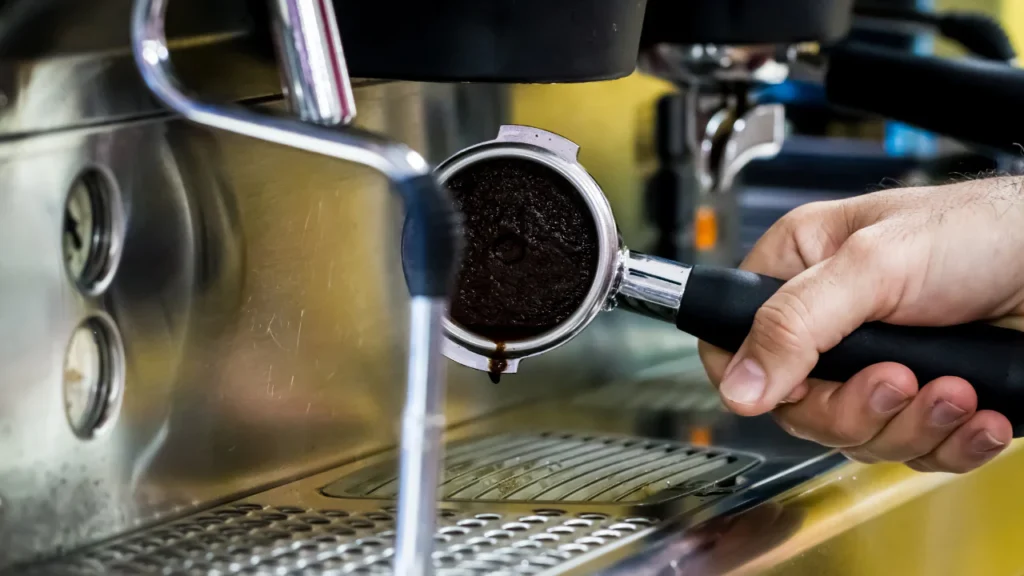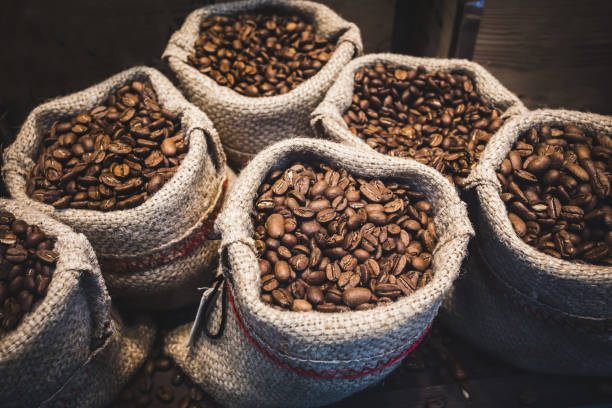Frustrated by a soggy espresso wet puck? A wet puck can ruin your espresso’s taste. This article will help you understand why it happens and how to fix it.

Key Takeaways
A wet espresso puck signals brewing issues that can negatively impact flavor; common causes include improper grind size, uneven tamping, and inadequate coffee dose.
Adjusting factors like grind size and tamping pressure, along with proper distribution of coffee grounds, helps achieve a dryer puck and better espresso extraction.
Regular maintenance of your espresso machine and grinder, along with using fresh coffee beans and keeping a shot log, are key practices for consistent espresso quality.
Identifying an Espresso Wet Puck
An espresso puck, or coffee puck, is the compacted mass of coffee grounds in your portafilter after brewing. An overly wet puck impacts the flavor of your espresso shots and indicates brewing problems.
Recognizing wet pucks and understanding their implications is crucial for improving espresso quality.
Visual Signs of a Wet Coffee Puck
Excessive moisture and an uneven texture in the espresso puck often result from improper grind size and uneven tamping. These visual cues reveal critical brewing issues.
Common Symptoms in Espresso Shots
A wet and soupy puck diminishes the flavor and texture of your espresso shots, often due to channeling, where water flows unevenly through the coffee bed. Inadequate tamping pressure leads to a lack of density, causing channeling and uneven extraction. Proper tamping techniques ensure a consistent coffee bed and prevent wet pucks.
An incorrectly formed puck compromises extraction, resulting in watery espresso shots lacking a rich flavor profile. Correct tamping pressure and even coffee grounds distribution are vital for perfect espresso extraction.
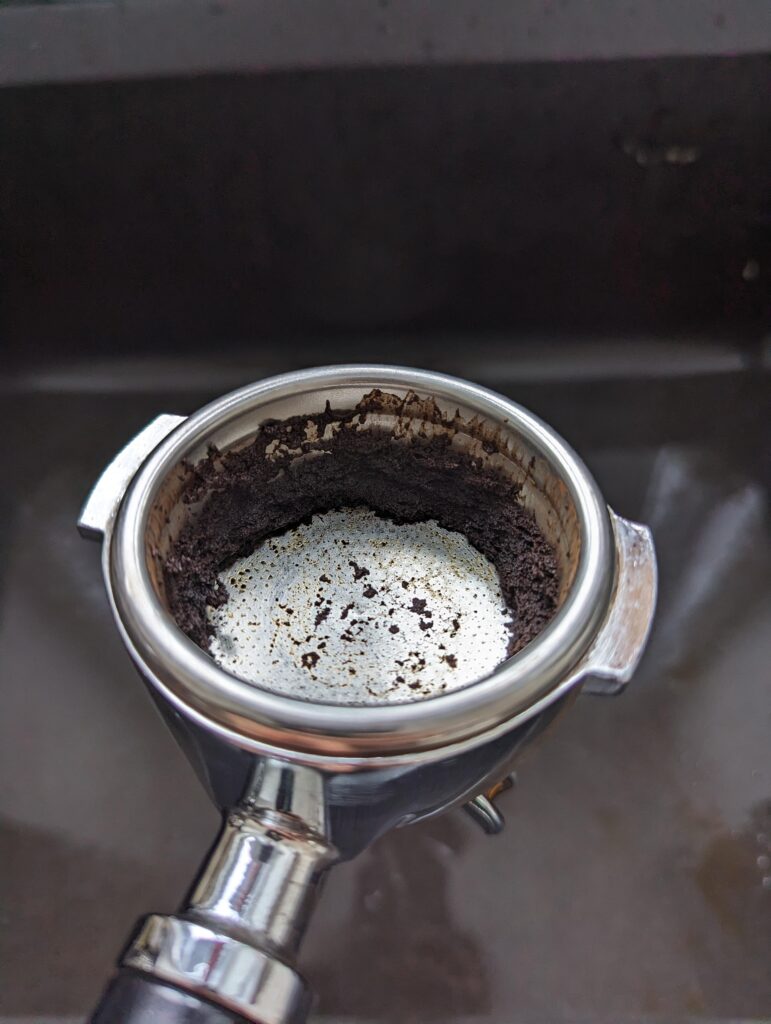
Factors Contributing to Wet Pucks
Factors like grind size, tamping pressure, coffee grounds distribution, and coffee dose contribute to wet pucks. Understanding these helps troubleshoot and improve espresso shots.
Each of these elements is crucial for achieving the desired puck consistency.
Grind Size
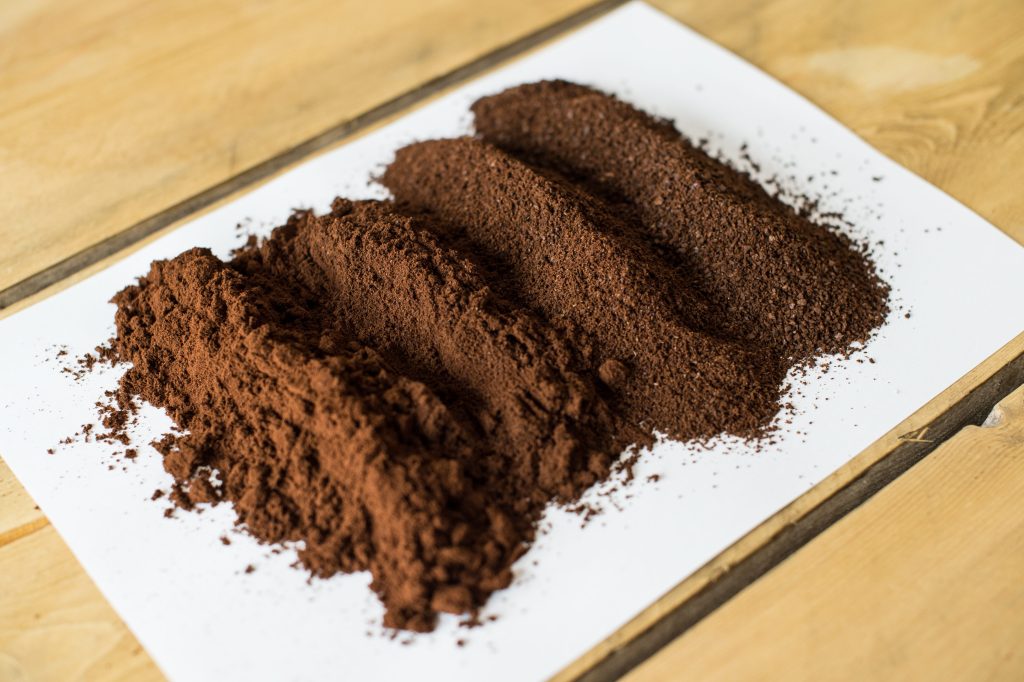
Grind size significantly impacts puck wetness. A coarse grind causes water to flow too quickly, leading to under-extraction and wet pucks. Conversely, a fine grind creates resistance, causing uneven water flow and dry pucks.
Adjusting the grind size appropriately ensures the right extraction time and puck consistency.
Tamping Pressure

Tamping pressure is crucial. Excessive pressure makes the coffee bed too dense, restricting water flow and causing channeling. Inadequate pressure leads to an uneven coffee bed, increasing the risk of wet pucks.
Consistent and adequate tamping pressure ensures a firm, level coffee bed for optimal espresso extraction.
Coffee Grounds Distribution and Coffee Bed
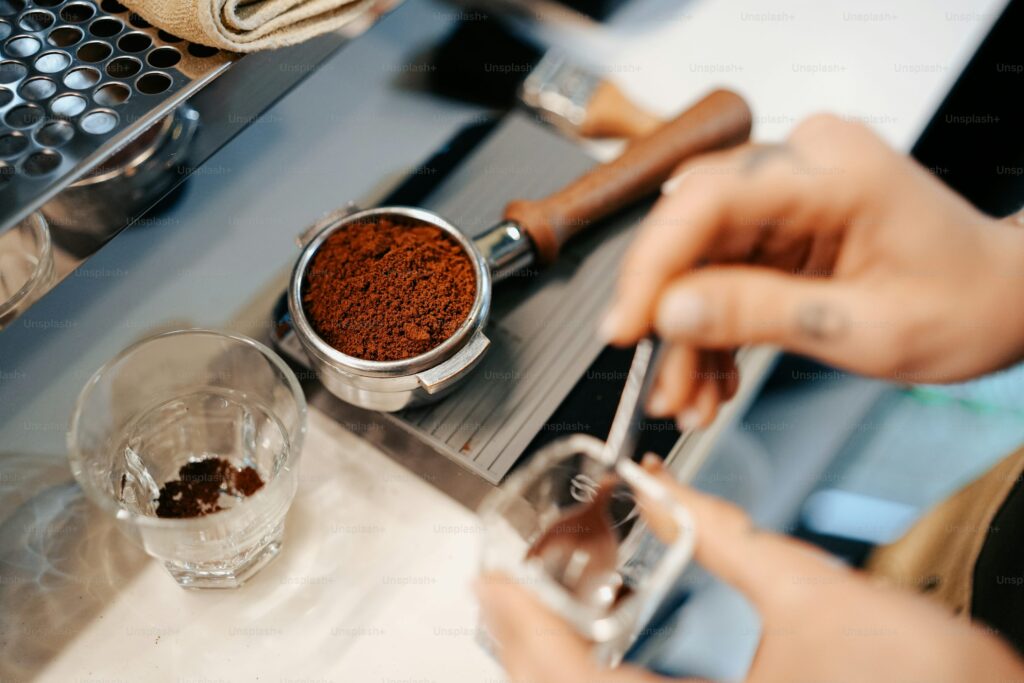
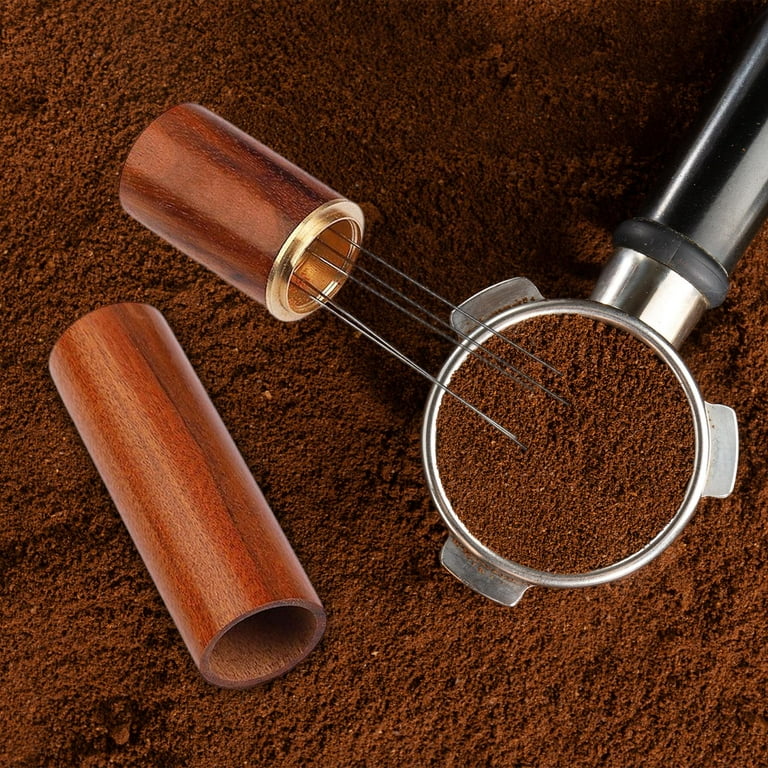
Properly distributing coffee grounds in the portafilter prevents channeling and ensures even extraction. Techniques like the Weiss Distribution Technique (WDT) can help achieve better distribution.
Evenly spreading coffee grounds forms a consistent coffee bed, minimizing the chances of wet pucks.
Coffee Dose
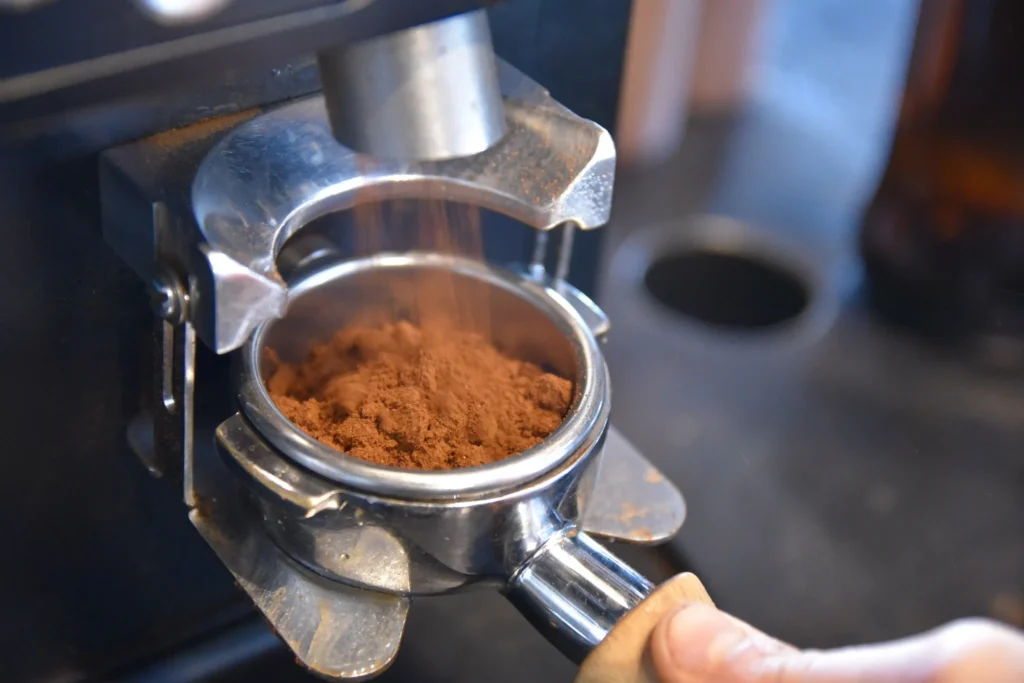
The coffee dose affects puck consistency. Under-dosing leads to a soggy puck, while over-dosing increases resistance, causing wet extraction. Adjusting the dose or using a smaller basket enhances puck firmness and improves espresso quality.
Using fresh beans and documenting extraction times also improve puck consistency.
Troubleshooting and Solutions for Wet Pucks
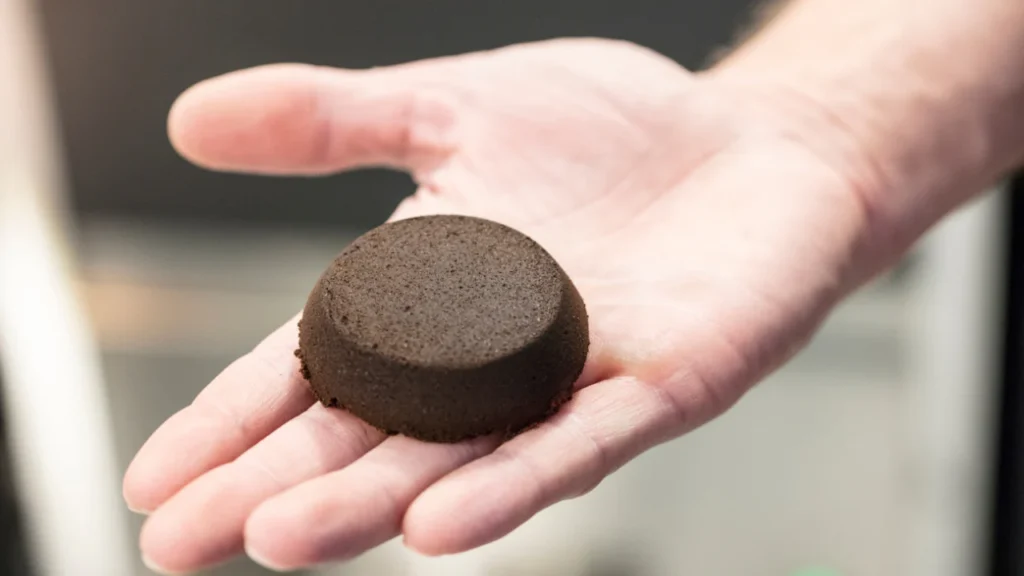
Troubleshooting wet pucks involves adjusting parameters like grind size, tamping technique, coffee grounds distribution, and machine calibration.
Addressing these factors achieves a more consistent and drier puck, resulting in better espresso shots.
Adjusting Grind Size
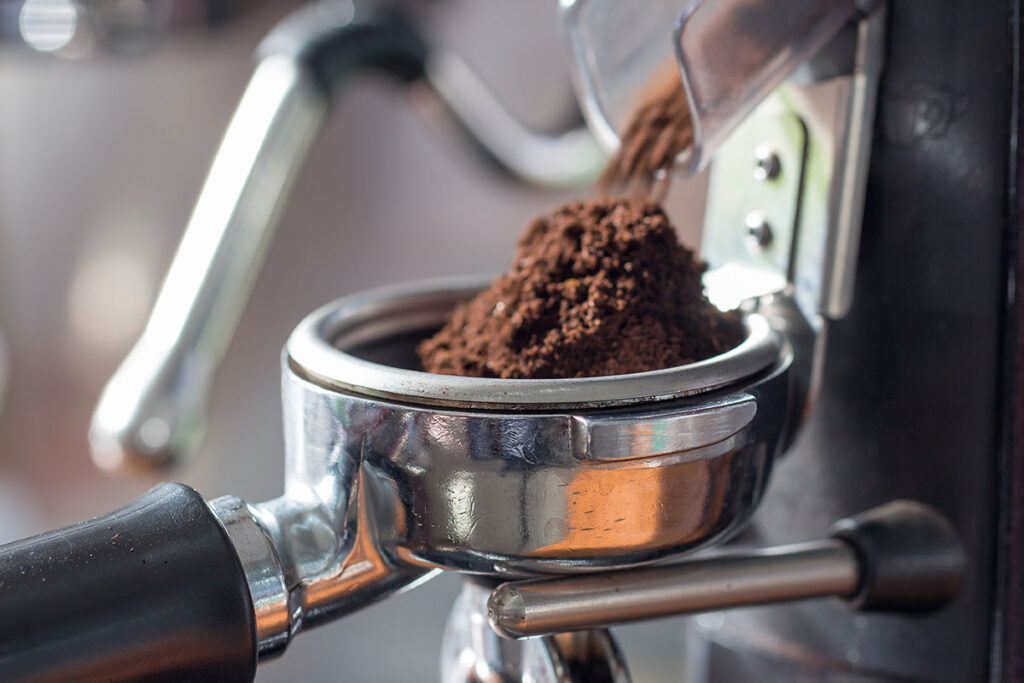
A wet puck impacts espresso shot quality, often resulting in undesirable flavors. Fine-tune your grinder settings and log grind size, coffee dose, extraction time, and puck appearance to identify patterns and issues. Small adjustments to grind size can control water flow more effectively, achieving a drier puck.
Ensure the distance from the top of the ground coffee bed to the shower screen is optimal, as this affects puck consistency. When the pump pressure is released, the puck can either expand and remain wet or push against the shower screen, influencing extraction.
Keep experimenting until you find the perfect balance.
Perfecting Tamping Technique
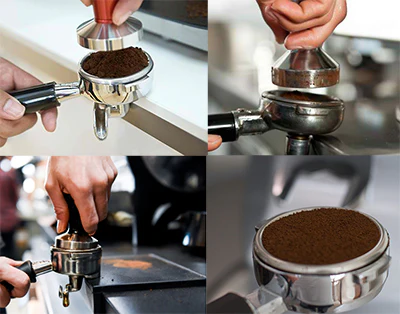
A calibrated tamping tool helps apply consistent pressure across all pucks, crucial for uniform extraction. Maintaining a straight wrist and a 90-degree elbow angle during tamping enhances control and ensures even pressure.
Aim to apply 20-30 pounds of pressure to create a compact and sturdy espresso puck.
Distributing Coffee Grounds Evenly
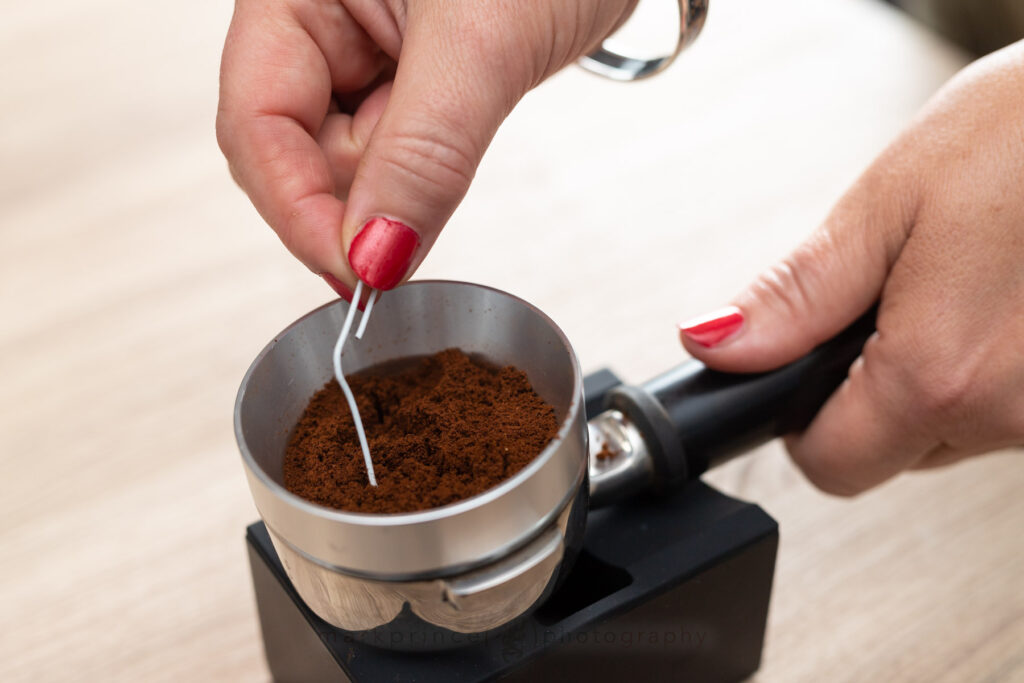
Properly distributing coffee grounds ensures even extraction and prevents channeling. Techniques like the Weiss Distribution Technique (WDT) help achieve better distribution, ensuring uniform water flow through the coffee bed.
Uniform distribution avoids wet pucks and extracts the best flavors from your coffee.
Calibrating Your Espresso Machine
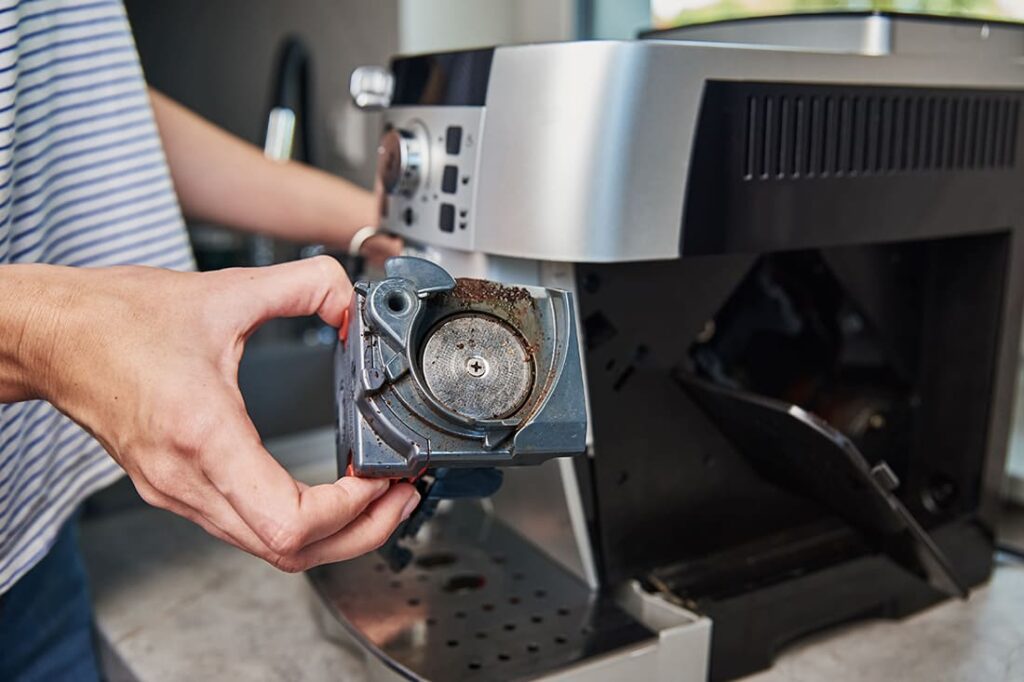
Regularly check and calibrate your espresso machine to maintain optimal extraction. Correct pressure settings significantly impact puck consistency.
Consider increasing the coffee dose or using a smaller basket to achieve firmer espresso pucks.
Maintaining Equipment for Consistent Pucks
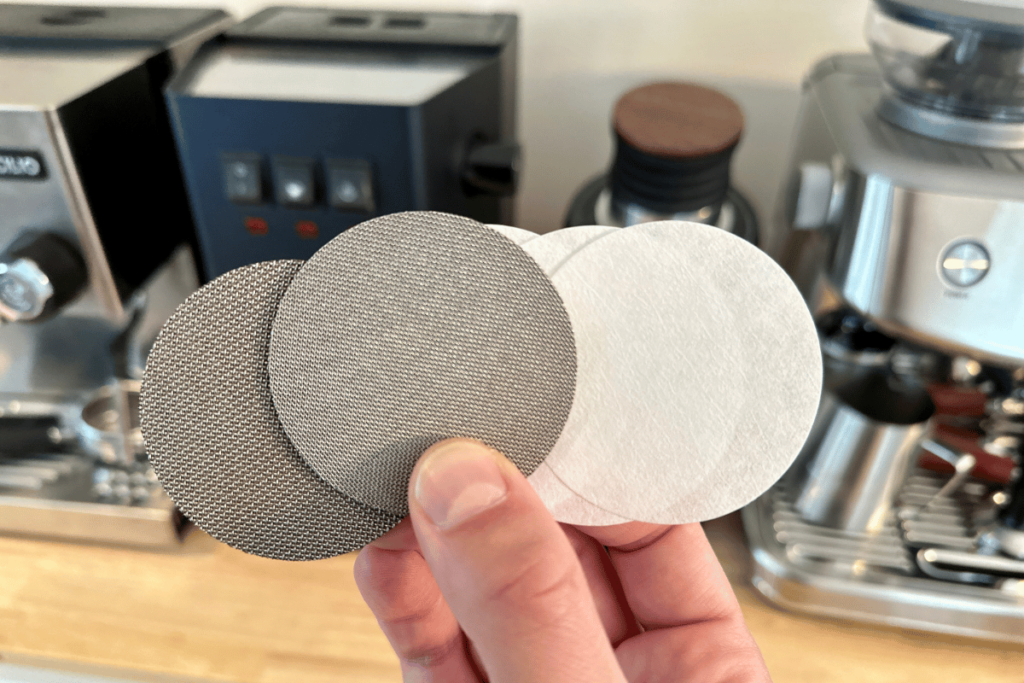
Regular maintenance of your espresso machine and grinder ensures consistent extractions and drier pucks. Keeping your equipment in top shape prevents issues that lead to wet pucks, resulting in better espresso shots.
Cleaning the Shower Screen and Group Head
Keeping the shower screen and group head clean ensures optimal hot water flow during extraction. Regularly flushing the group head after each shot prevents the buildup of coffee grounds and oils, which can obstruct water flow and affect flavor extraction.
Using a brush to clean the dispersion screen helps maintain optimal water flow.
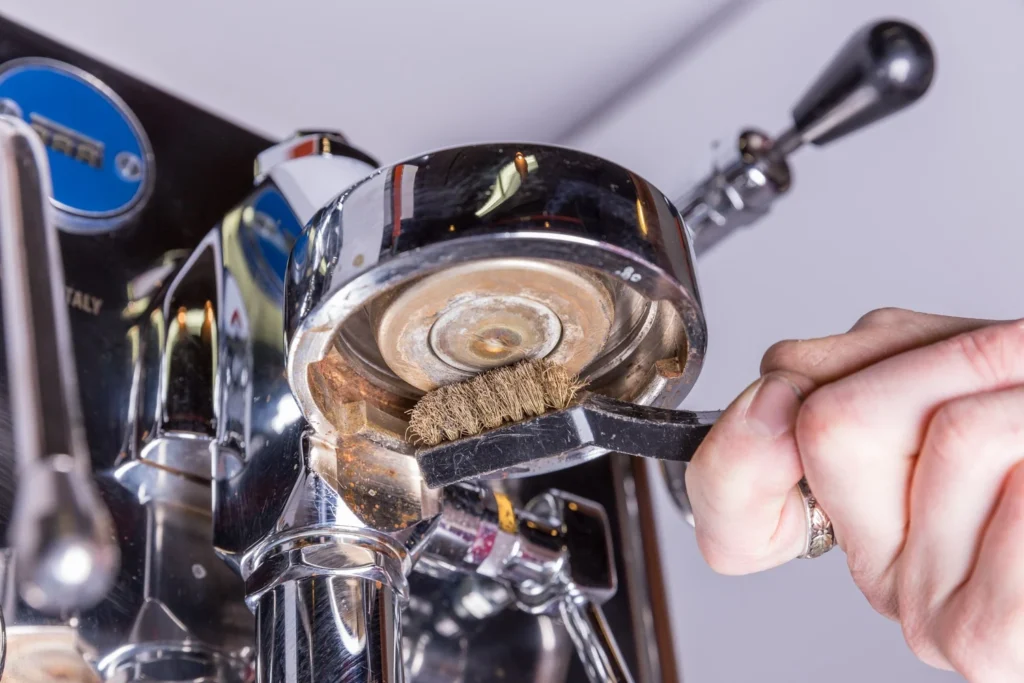
Regular Grinder Maintenance
Regular grinder maintenance keeps the burrs sharp, directly influencing the consistency of the coffee grind. Sharp burrs ensure a uniform grind size, leading to better extraction quality.
Consistent grinder performance results from proper maintenance, making it essential for your espresso-making routine.
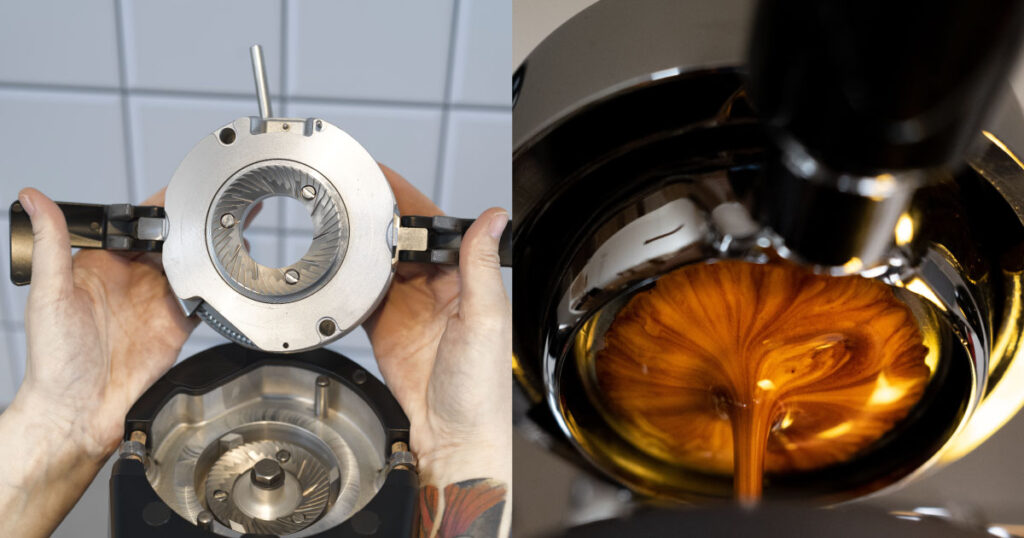
Checking Portafilter and Basket Size
Using the correct portafilter and basket size ensures optimal puck consistency and espresso quality. Ensure the portafilter fits your machine securely to prevent compromised extraction.
An appropriately sized basket helps in even distribution of coffee grounds, aiding in proper extraction.
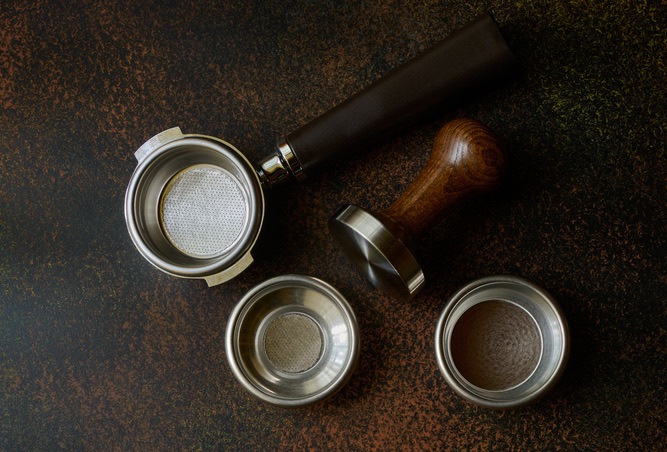
Tips for Home Baristas

Consistency is crucial for home baristas mastering the art of espresso making. Here are additional tips to improve your skills and achieve better results: use fresh coffee beans, keep a shot log, and experiment with small adjustments.
Using Fresh Coffee Beans
Fresh coffee beans plays contribute to a more flavorful and aromatic espresso shot. Using beans within 2-4 weeks of roasting ensures optimal flavor extraction, leading to a richer crema and more nuanced flavor profile. Look for single-origin beans for unique flavors, and always check roast dates for freshness.
Store your beans in an airtight container, in a cool, dark place, away from moisture and heat. Avoid storing coffee beans in the refrigerator, as it can introduce moisture and affect flavor.
Keeping a Shot Log
A shot log helps record various aspects of your espresso shots and track your brewing process. Noting details like grind size, tamping pressure, and extraction time allows you to spot trends and inconsistencies over time.
Systematic tracking helps make informed adjustments to improve shot quality and consistency.
Experimenting with Small Adjustments
Experimenting with different coffee amounts to identify the optimal dose for your espresso is normal. Small adjustments to variables like grind size and coffee dose improve espresso quality. Logging adjustments and outcomes refines your espresso preparation technique.
Summary
In summary, achieving the perfect espresso shot is an art that requires attention to detail and consistent practice. By understanding and identifying the signs of a wet puck, you can take the necessary steps to improve your espresso extraction. Factors such as grind size, tamping pressure, coffee grounds distribution, and coffee dose all play critical roles in the final outcome of your espresso puck.
Maintaining your equipment, from regular cleaning of the shower screen and group head to ensuring your grinder is in top shape, is essential for consistent results. For home baristas, using fresh coffee beans, keeping a shot log, and experimenting with small adjustments can significantly enhance your espresso-making skills. With these tips and a bit of practice, you’ll be pulling perfect espresso shots in no time.
Frequently Asked Questions
Why isn't my espresso puck dry?
If your espresso puck isn’t dry, it might be due to under-dosing your coffee. Make sure you’re using the right amount for your basket size to reduce excess water.
What causes a wet espresso puck?
A wet espresso puck typically happens due to an incorrect grind size, uneven tamping, or poor coffee distribution. Make sure to check your coffee dose and machine maintenance for the best results!
How can I tell if my espresso puck is too wet?
You can tell if your espresso puck is too wet by looking for excessive moisture and a soupy texture instead of a firm, even surface. A well-extracted puck should have a dry and consistent look.
What is the ideal grind size for espresso?
The ideal grind size for espresso is fine, but be careful not to make it too fine, as it should allow for proper water flow. Small adjustments can help you find that perfect balance!
How much tamping pressure should I use?
Aim for 20-30 pounds of tamping pressure for a solid espresso puck. This consistency is key to achieving a great extraction!
What Are Watery Pucks, and Are They Completely Normal?
Watery pucks are spent espresso grounds that retain excessive moisture after brewing. While a slightly wet puck can be completely normal, overly soupy pucks indicate an issue with the brewing process, such as uneven tamping or grind size. Adjusting these factors can help your espresso flow evenly and avoid over-extraction.
Item #7Why Does My Puck Retain More Water Than Usual?
Your puck may hold more water due to using too little coffee, an uneven distribution of grounds, or low brewing pressure. Water follows the path of least resistance, so unevenly packed grounds can result in watery pucks. Ensuring you evenly distribute coffee in the portafilter is one of the most effective practical solutions for this issue.
What Role Does the Portafilter Play in Wet Pucks?
The portafilter needs to be handled carefully to ensure even extraction. Remove the portafilter immediately after brewing to inspect your puck. If it’s overly wet, check for several factors such as coffee grind size, tamping consistency, and whether the grounds are evenly packed.
How Can I Prevent Over-Extraction?
To prevent over-extraction, use a consistent grind size and proper tamping pressure. Over-extraction can happen when water takes too long to pass through the puck, causing bitter flavors and wet grounds. Cleaning your machine regularly ensures that hot water flows evenly through the puck, improving extraction results.
Do I Need More Space in My Basket?
Using the right basket size for your coffee dose is essential. Too little space in the basket can compress the grounds too tightly, leading to uneven brewing. Conversely, too much space can result in a loose puck, increasing the chance of watery pucks.
What Should Coffee Enthusiasts Know About Fixing Wet Pucks?
For coffee enthusiasts, achieving the perfect puck means balancing grind size, tamping, and coffee distribution. These adjustments ensure the water can flow evenly through the grounds, avoiding spent pucks that are too wet. Experimentation is key to perfecting your espresso-making process!

